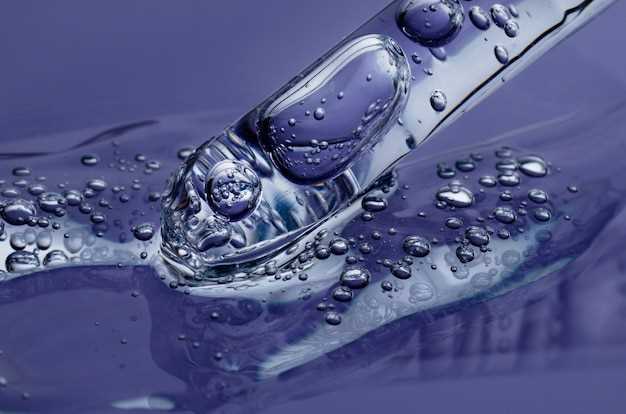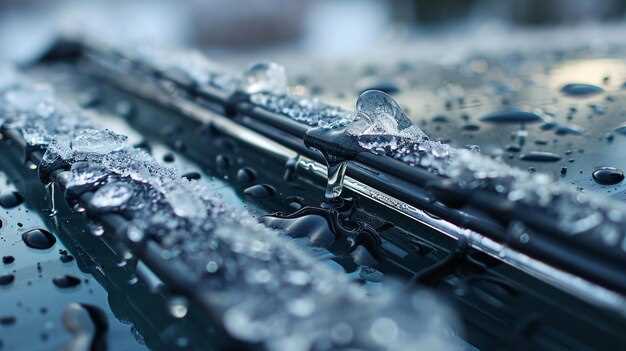
Keeping a vehicle in optimal condition requires attention to various components, one of which is the coolant system. Regular maintenance of this critical system is essential for ensuring efficient engine performance and longevity. The coolant, a mixture of water and antifreeze, plays a vital role in regulating engine temperature and preventing overheating.
Neglecting coolant maintenance can lead to a range of issues, from reduced efficiency to catastrophic engine failure. Over time, coolant can become contaminated with rust, debris, and chemical breakdown products, diminishing its effectiveness. Regular maintenance helps not only to maintain the quality of the coolant but also to identify potential problems early on, saving both time and money in the long run.
Moreover, maintaining the coolant system plays a significant role in overall vehicle safety. An overheated engine can result in severe damage, leading to costly repairs and potentially jeopardizing the driver and passengers. By prioritizing coolant maintenance, vehicle owners can ensure that their engines operate smoothly, enhancing both performance and safety on the road.
How Coolant Quality Impacts Engine Performance

The quality of coolant plays a critical role in maintaining optimal engine performance. High-quality coolant not only regulates temperature but also protects the engine from various forms of damage. Understanding the implications of coolant quality can significantly impact vehicle longevity and efficiency. Here are some key factors:
- Thermal Conductivity: Quality coolant enhances heat transfer, maintaining engine temperature within the ideal range. This prevents overheating and ensures that the engine operates efficiently.
- Corrosion Inhibition: Top-tier coolants include additives that prevent rust and corrosion within the engine components. Poor-quality coolant can lead to interior damage, resulting in costly repairs.
- Boiling and Freezing Points: Quality coolant is engineered to withstand extreme temperatures. It has a higher boiling point and a lower freezing point, reducing the risk of engine damage in severe conditions.
- pH Balance: The pH level of the coolant influences its effectiveness. Ideally, it should be slightly alkaline. If the pH drops too low, it can cause corrosion, affecting engine performance.
- Foam Reduction: High-quality coolants reduce foaming, which can impede heat transfer and lead to air pockets within the cooling system. This can cause overheating and diminished performance.
In summary, using and maintaining high-quality coolant is essential for protecting the engine, enhancing performance, and prolonging vehicle life. Neglecting coolant quality can lead to decreased efficiency and increased operational costs.
Identifying Signs of Coolant Contamination
Regular inspection of the coolant in your vehicle is essential for ensuring optimal engine performance and longevity. Contaminated coolant can lead to serious engine issues if not identified and addressed promptly. Here are the key signs to look for when assessing coolant contamination:
| Signs | Description |
|---|---|
| Discoloration | Coolant usually appears green, orange, or pink, depending on the type. If a brown or rust-colored tint is observed, it may indicate contamination from rust, dirt, or debris. |
| Presence of Particles | Visible particles or sediment settling at the bottom of the coolant reservoir may suggest impurities or breakdown products, indicating the need for a coolant flush. |
| Foaming | Foam on the surface of the coolant can indicate the presence of oil or other contaminants, which can be detrimental to the cooling system. |
| Unusual Odors | A sweet or burnt smell emanating from the coolant can be a sign of aging fluid or engine oil leaking into the cooling system. |
| Visible Corrosion | Corrosion in the radiator or any cooling system component can emit rust and debris into the coolant, suggesting it has become contaminated. |
| Low Coolant Levels | Frequent topping off of coolant levels may indicate leaks caused by contamination or breakdown of the coolant, necessitating a thorough inspection. |
Being aware of these signs can help in taking timely action to maintain your vehicle’s cooling system. Regular checks and maintenance can prevent extensive damage and ensure the efficiency of your engine.
Steps for Proper Coolant Replacement
Replacing the coolant in your vehicle is essential for maintaining optimal engine performance and preventing overheating. Follow these steps for a successful coolant replacement:
1. Gather Necessary Supplies: Before beginning, gather the required tools and materials. You will need fresh coolant compatible with your vehicle, a funnel, a drain pan, a radiator cap, and possibly a wrench or pliers to remove hoses.
2. Allow Engine to Cool: Ensure the engine is completely cool before starting. Opening a hot cooling system can result in steam and boiling coolant, posing a safety risk.
3. Locate the Drain Valve: Find the coolant drain valve on the radiator or, if your vehicle lacks one, position the drain pan under the vehicle to catch the old coolant. Reference the owner’s manual if needed.
4. Drain the Old Coolant: Open the drain valve carefully, allowing the old coolant to flow into the drain pan. If there’s no valve, disconnect the lower radiator hose to let the coolant drain. Take care to avoid spills as coolant can be harmful to pets and the environment.
5. Flush the Cooling System: For a thorough clean, consider flushing the cooling system with water. Refill the system with water, run the engine until it reaches operating temperature, and drain again to remove any remaining contaminants.
6. Add New Coolant: With the old coolant drained and the system flushed, use a funnel to add new coolant to the radiator or reservoir. Ensure you use the correct type and mix it according to the manufacturer’s guidelines.
7. Check for Leaks: After adding the new coolant, start the engine and let it run for a few minutes. Observe the hoses and connected parts for any leaks. Tighten any connections as necessary.
8. Replace the Radiator Cap: Once confident that there are no leaks, securely replace the radiator cap. This helps maintain the pressure necessary for efficient cooling.
9. Dispose of Old Coolant Properly: Collect the old coolant in a sealed container and take it to a recycling center or an auto shop that accepts used coolant. Never pour it down the drain or dispose of it in regular trash.
10. Monitor Coolant Levels: After the replacement, check the coolant levels periodically. Low levels could indicate a leak or evaporation, requiring further inspection.
By following these steps, you can effectively manage your vehicle’s coolant system, ensuring longevity and performance.
The Role of Coolant in Preventing Overheating
Coolant, also known as antifreeze, plays a crucial role in maintaining optimal engine temperatures. Its primary function is to absorb heat generated by the engine and dissipate it through the radiator, ensuring that the vehicle does not overheat. Here are key aspects of how coolant contributes to preventing overheating:
- Heat Absorption: Coolant circulates through the engine, absorbing excess heat produced during combustion. This process helps maintain a stable operating temperature, which is essential for performance and longevity.
- Temperature Regulation: The coolant maintains an appropriate temperature range, ensuring that engine components function efficiently. If the coolant level is low or its effectiveness diminished, overheating becomes likely.
- Corrosion Prevention: Modern coolants contain additives that prevent rust and corrosion within the cooling system. A well-maintained coolant system reduces the risk of internal damage that can lead to overheating.
- Freezing Resistance: In colder climates, coolant prevents the freezing of engine components, which can cause severe damage and lead to overheating when the engine is running.
To ensure the effectiveness of coolant in preventing overheating, it is essential to regularly check coolant levels and quality. Contaminated or degraded coolant can lose its efficiency, leading to potential overheating issues. Here are steps to maintain coolant effectiveness:
- Check the coolant level regularly and top it off as needed.
- Flush and replace the coolant according to the manufacturer’s recommendations.
- Inspect the cooling system for leaks or damage that could compromise coolant circulation.
- Test the coolant’s pH and freeze protection level to ensure it is adequately formulated for your vehicle.
In summary, the proper maintenance of coolant not only prevents overheating but also enhances overall vehicle performance and reliability. Regular checks and timely replacements are key to avoiding costly repairs and ensuring a smooth driving experience.
Understanding Coolant System Leaks and Their Consequences
Coolant system leaks can pose significant risks to vehicle performance and longevity. The coolant system is essential for regulating the engine temperature, preventing overheating, and maintaining optimal operating conditions. A leak can severely disrupt this balance, leading to serious mechanical issues.
Identifying a coolant leak early is crucial. Common signs include a decrease in coolant levels, puddles under the vehicle, or a sweet smell characteristic of antifreeze. These symptoms indicate that fluid is escaping the system, which can lead to insufficient cooling, increased engine temperatures, and ultimately, engine failure.
The consequences of ignoring coolant leaks are dire. Without sufficient coolant, the engine can overheat, resulting in warped cylinder heads, blown head gaskets, or even complete engine failure. Additionally, overheating can damage other critical components, such as the radiator and hoses, leading to more costly repairs.
Regular maintenance is vital in preventing leaks and ensuring the coolant system functions effectively. Inspections should include checking hoses for cracks, inspecting the radiator for corrosion, and ensuring all connections are tight. Proper coolant mixture and level also contribute to the system’s overall health.
In conclusion, understanding coolant system leaks and their potential consequences highlights the importance of proactive maintenance. Addressing leaks promptly not only preserves the vehicle’s integrity but also enhances its reliability and performance over time.
The Importance of Using Manufacturer-Recommended Coolant Types
Using manufacturer-recommended coolant types is crucial for maintaining vehicle performance and longevity. Each vehicle is designed with specific materials and components that require compatible coolant formulations to prevent corrosion, overheating, and freezing. Manufacturer-approved coolants contain specialized additives tailored to protect the engine and cooling system from damage.
Different engines have unique thermal and chemical requirements. For instance, engines made of aluminum are particularly susceptible to corrosion. Using the wrong type of coolant can accelerate wear and reduce the efficiency of the cooling system, leading to potential overheating and significant engine damage.
Additionally, manufacturers conduct extensive testing to determine the best coolant formulation for their vehicles. This testing ensures that the coolant delivers optimal heat transfer, prevents the formation of rust and scale, and maintains proper viscosity across a wide range of temperatures. Failing to adhere to these recommendations can void warranties and lead to costly repairs.
Furthermore, using the correct coolant also contributes to overall vehicle safety. A malfunctioning cooling system can cause engine failure, which could result in breakdowns or accidents. Regular coolant maintenance and adherence to manufacturer specifications support not only vehicle reliability but also driver safety.
In summary, always refer to the vehicle owner’s manual for the recommended coolant type and follow those specifications strictly. This proactive approach ensures that the vehicle remains in peak condition while minimizing the risk of potential issues related to the cooling system.















